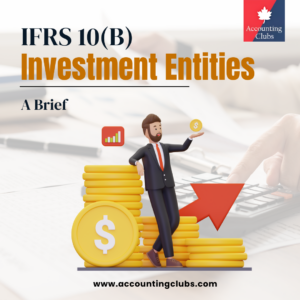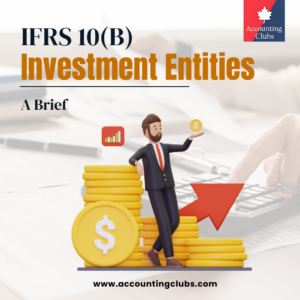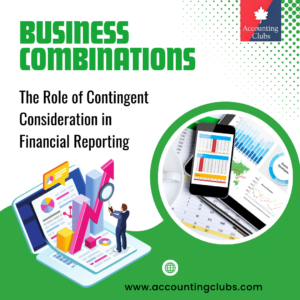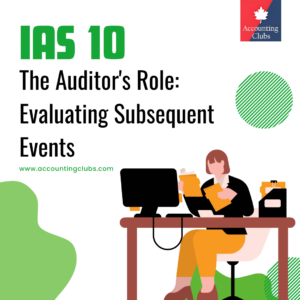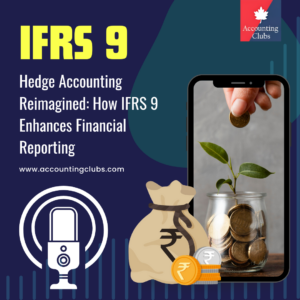Chapter 13: Disclosure
Objective
The disclosure requirements to assist users in understanding the reporting entity are set out in IFRS 12. The standard’s objective is for entities to disclose information that helps readers of financial statements to evaluate the nature, risks and financial effects related to the entity’s interests in subsidiaries, associates, joint arrangements and unconsolidated structured entities. [IFRS 12 para 1].
An entity should disclose the following:
- significant judgements and assumptions that it has made in determining the nature of its interest in another entity or arrangement; and
- information about its interests in joint arrangements and associates.
IFRS 12 clarifies that, with the exception of disclosure of summarised information, the requirements in IFRS 12 apply to interests in entities within the scope of IFRS 5, including interests that are classified (or included in a disposal group that is classified) as held for sale or discontinued operations.
Aggregation
An entity can aggregate or disaggregate information in order to meet the disclosure objective. The information disclosed should be a balance between burdening the financial statements with too much insignificant detail and obscuring information as a result of too much aggregation.
Disclosure of interests in similar entities can be aggregated if doing so is consistent with the disclosure objective. Where there is such aggregation, an entity should disclose how it has aggregated its interests in similar entities.
In considering the entities to aggregate, the reporting entity should consider quantitative and qualitative information to assess the different risk and return characteristics of each entity and the significance of each entity to the reporting entity. An entity should not aggregate items with different characteristics.
An entity should present information separately for interests in subsidiaries, joint ventures, joint operations, associates and unconsolidated structured entities.
The carrying amounts of joint ventures or associates that are individually immaterial and are accounted for under the equity method should be aggregated. There are separate disclosure requirements for joint ventures.
Significant judgements and assumptions
An entity should disclose significant judgements and assumptions that it has made in determining whether it has:
- joint control of an arrangement or significant influence over another entity; and
- an arrangement that has been structured through a separate vehicle and whether it is a joint operation or a joint venture.
An entity should also disclose significant judgements and assumptions where changes in the facts and circumstances have changed the conclusion during the reporting period.
Interests in joint arrangements and associates
An investor must disclose the nature, extent and financial effects of its interests in joint arrangements and associates.
Summarised financial information
An investor must disclose summarised financial information for its material joint ventures and associates, as well as all dividends and distributions received, in addition to other required disclosures.
The summarised financial information is derived from the financial statements of the joint venture or associate, and not solely the investor’s share of those amounts. The amounts reported should include the adjustments recorded by the investor for the notional purchase price allocation, and any adjustments for differences in accounting policy. The investor should reconcile the summarised financial information to the carrying amount of the investor’s interest in the joint venture or associate.
Summarised financial information is not required where an interest in a joint venture or an associate is classified (or included in a disposal group that is classified) as held for sale in accordance with IFRS 5. Joint ventures and associates that are classified as held for sale are presented separately from other assets in the balance sheet, and the disclosure requirements of IFRS 5 apply.
If the investor measures its interest in a joint venture or an associate at fair value in accordance with IAS 28, and if the joint venture or associate does not prepare IFRS financial statements, and preparation on an IFRS basis would be impracticable or would cause undue cost, the summarised financial information could be presented on the basis of the joint ventures or associate’s financial statements. The investor should disclose the basis that was used to prepare the summarised information.
Significant restrictions
The nature and extent of any significant statutory, borrowing or contractual restrictions on a joint ventures or associate’s ability to transfer funds to the entity in the form of dividends or repayment of loans or advances should be disclosed.
Reporting date of joint venture and associate’s financial statements
Disclosure is also required where any associates or joint ventures have a different period end or period length to that of the investor’s consolidated financial statements. The reporting date of the joint venture or associate should be disclosed, as well as the reason why a different date or reporting period has been used.
Unrecognised losses
An investor that has stopped recognising its share of losses of a joint venture or an associate must disclose its unrecognised share of net losses of a joint venture or an associate, both for the current period and cumulatively, including previous periods.
Commitments of joint ventures
There are additional disclosure requirements where a joint venture has commitments that will give rise to a future outflow of cash or other resources which it has not recognised at the reporting date. The investor should disclose the total of such unrecognised commitments.
Contingent liabilities
Contingent liabilities incurred in relation to an entity’s interests in joint ventures or associates should be disclosed separately from the amount of other contingent liabilities. This includes the share of contingent liabilities incurred jointly with other investors with joint control of, or significant influence over, the joint ventures or associates.

